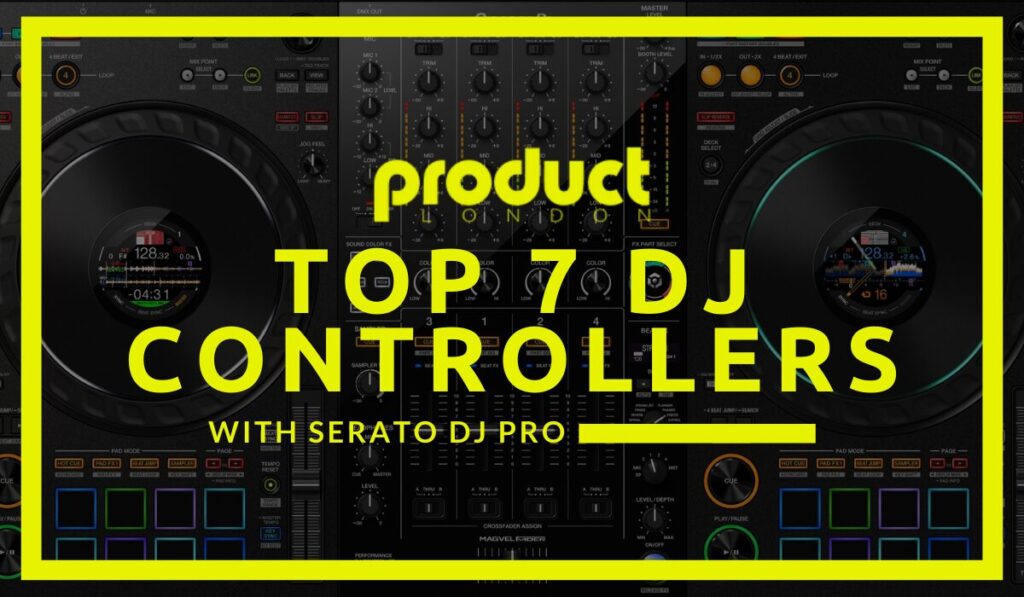To effectively use headphones in DJing, it’s essential to master several key elements. Start with the headphone settings: utilize noise-cancelling features for clarity and understand the Cue Active Indicator for track preparation. Split Mode helps by allowing you to monitor one track in each ear, critical for precise beatmatching. Familiarize yourself with your mixer’s layout, particularly cue/mix control and EQ adjustments. Practice beatmatching using both ears and split modes to refine your timing. Pre-listen to tracks to understand their structure and guarantee seamless shifts. Mastery of these basics will boost your DJ skills and enhance your live performances.
Key Takeaways
- Use Cue/Mix Control: Adjust the volume balance between cued and live tracks for effective beatmatching.
- Activate Split Mode: Monitor the cued track in one ear and the live track in the other to sync beats accurately.
- Understand ACue Active Indicator: Ensure channels are ready for cueing to prepare tracks seamlessly.
- Practice Both Ear Mode: Listen to both tracks equally to aid rhythm and timing recognition.
- Leverage Noise-Cancelling: Maintain audio clarity in loud environments for better performance quality.
Headphone Settings
Headphone settings are a significant aspect of DJing, often determining the quality and fluidity of a performance. Effective cueing techniques begin with understanding the ACue Active indicator, which signals when a channel is prepared for cueing. This allows DJs to seamlessly prepare the next track without audience exposure, ensuring a smooth shift.
DJs often favor headphones with advanced noise-cancelling technologies to maintain audio clarity in loud settings. Split Mode is another fundamental setting, enabling the left ear to monitor the cued track while the right ear hears the live track. This dual-monitoring capability is indispensable for precise beatmatching and shifts.
When Split Mode is off, the Cue/Mix Control becomes essential, as it adjusts the volume ratio between the live and cued tracks, allowing for balanced and accurate mixing. Proper level adjustment is important; the headphone output volume should match the room volume, ensuring effective mixing and accurate track monitoring.
Additionally, the Jack Input feature offers flexibility by accommodating both large and small headphone jacks, catering to various headphone types.
Beatmatching Techniques
Mastering beatmatching techniques is fundamental for any DJ aiming to deliver seamless and enthralling performances. Accurate beatmatching guarantees smooth shifts between tracks, maintaining the energy flow on the dance floor. Utilizing both ear mode and split headphone mode are essential cueing techniques that can notably aid in achieving precise beat alignment. Regular practice with varying BPMs can also enhance your adaptability and timing.
- Both Ear Mode: Engaging both ear mode allows DJs to hear both tracks equally in both ears. Although this can assist with rhythm and timing, it may complicate distinguishing individual beats. This mode is beneficial for those who have developed a keen ear for intricate rhythm patterns.
- Split Headphone Mode: This technique is invaluable for beatmatching, as it enables the DJ to hear the live track in one ear and the cued track in the other. This separation makes it easier to adjust tempo and align beats accurately.
- Pitch Control: Utilizing pitch control on the decks is vital for beatmatching. Adjusting the playback speed guarantees that the beats of both tracks are synchronized, facilitating smoother shifts. You can also use tempo synchronization methods to maintain the crowd’s energy alignment.
- Regular Practice: Consistent practice is essential. Experimenting with different beatmatching techniques allows DJs to discover personal preferences and improve their skills. Additionally, practicing with various genres enhances understanding of unique rhythmic structures.
Incorporating these strategies will enhance your DJing prowess, guaranteeing enthralling performances.
Mixer Familiarization
Building on the foundation of beatmatching techniques, it is essential to develop a thorough understanding of your DJ mixer to guarantee effective performance. Familiarizing yourself with the mixer layout is vital, as each mixer may have unique functionalities that shape your mixing style.
Key components such as EQ adjustments, faders, and effect buttons play a pivotal role in crafting seamless shifts and maintaining the desired audio output. For instance, mixers like the Allen & Heath Xone 42 offer specific settings that, when mastered, can greatly enhance your creative capabilities. Regularly experimenting with these settings allows you to grasp how different configurations impact the sound, leading to smoother and more professional mixes.
Additionally, adjusting the crossfader curve can help achieve the desired smoothness in shifts between decks.
Knowing the precise functions of EQ knobs is particularly important, as they enable you to adjust the frequency balance of tracks, ensuring a harmonious blend.
Practicing with your mixer, experimenting with various techniques, and understanding its layout will build your confidence and proficiency, essential for live performance scenarios.
Transition Techniques
Transition Techniques
How do DJs maintain the momentum of a set and keep the audience engaged? Effective transition techniques are fundamental for preserving the flow of a DJ set and boosting crowd engagement. Seamless transitions can greatly enhance the energy of a performance, and mastering these techniques is a hallmark of a proficient DJ.
To achieve smooth transitions, DJs must focus on several key stages:
1. Preparation: This involves selecting tracks that complement each other regarding tempo, key, and mood. Efficient preparation guarantees that the transitions will feel natural and maintain the desired energy level.
2. Execution: Utilizing skills such as beatmatching, cueing, and harmonic mixing is essential. These techniques prevent awkward gaps and mismatches, guaranteeing a consistent energy flow on the dance floor. DJs can also employ tools like BPM counters to aid in aligning the tempo of different tracks more accurately.
3. Regular Practice of Transition Styles: Familiarizing oneself with different transition styles, such as fading, cutting, or using effects, helps in developing a personal mixing style. This practice is significant for enhancing overall performance skills.
Additionally, manual beat matching is an excellent way to improve ear training and develop confidence in mixing.
4. Audience Engagement: Techniques like volume adjustments and building up to a drop can create memorable moments. Engaging with the audience during transitions not only maintains the set’s momentum but also enhances the live experience.
These strategies collectively guarantee that DJs can maintain a dynamic and engaging set, mesmerizing their audience throughout the performance.
Pre-Listening to Tracks
Pre-listening to tracks in headphones is a pivotal skill for DJs aiming to deliver seamless and enchanting sets. This practice allows DJs to intimately understand the musical structure of each track, including the intro, verse, chorus, and breakdown. Such familiarity is indispensable for planning changes that maintain the energy and flow of the performance.
Effective track selection hinges on this understanding; knowing precisely when to introduce the next track can make the difference between a smooth mix and an awkward gap. Pre-listening also aids in harmonic mixing, ensuring that tracks blend harmoniously.
Genres like drum and bass or progressive house, which demand precise timing, particularly benefit from this technique. Pre-listening enables DJs to anticipate and execute changes with pinpoint accuracy, ensuring that the musical journey remains cohesive and engaging. By identifying the ideal moments for changes, DJs can avoid mismatches that disrupt the vibe and instead keep the crowd’s energy high.
Moreover, regular practice of pre-listening techniques not only refines a DJ’s technical skills but also enhances their ability to read the crowd. This adaptability allows for real-time adjustments to the set, resulting in a more dynamic and enchanting performance.
Mastery of pre-listening is therefore essential for any DJ working for excellence in their craft.
Frequently Asked Questions
How to Use Headphones When DJING?
To effectively use headphones when DJing, employ cue mixing to seamlessly shift tracks. Utilize appropriate headphone types for clear sound and comfort. Guarantee volume management, pre-listen to tracks, and practice regularly to refine your skills.
Can You Use Normal Headphones for DJING?
While normal headphone types can be used for DJing, they typically lack the sound isolation and durability required for professional use. Specialized DJ headphones are designed to provide better isolation, sound quality, and comfort for extended sessions.
Can I DJ With Only Headphones?
Yes, you can DJ with only headphones for practice and mastering mixing techniques. Proper headphone selection, such as high-quality studio headphones with a flat frequency response, is essential for precision in cueing and beatmatching without external speakers.
Why Do DJS Wear Their Headphones Like That?
DJs position their headphones over one ear to achieve ideal sound isolation, allowing them to monitor the cued track while staying aware of the live mix. This technique guarantees precise beatmatching and seamless shifts in dynamic performance environments.
Conclusion
Mastering the use of headphones in DJing is vital for professional performance. Proper headphone settings, coupled with effective beatmatching techniques, greatly enhance track synchronization. Familiarity with the mixer allows seamless integration of audio elements, while advanced shift techniques guarantee fluid progression between tracks. Pre-listening to tracks is essential for anticipating and correcting potential issues, thereby maintaining the integrity of the mix. Implementing these strategies will result in a more cohesive and polished DJ set, elevating the overall auditory experience.




